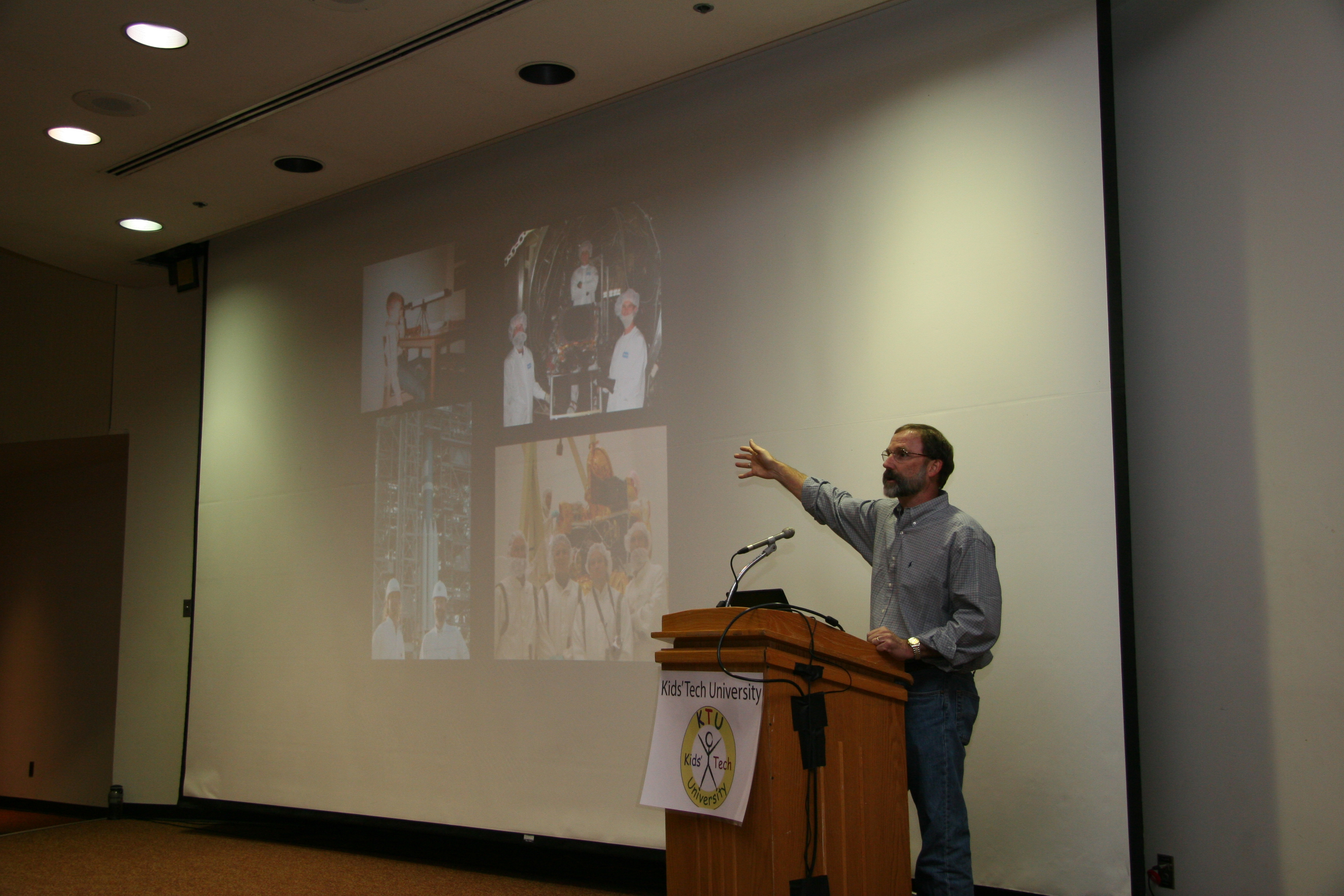Kids' Tech University semester closes with a look at life on Mars

This year's Kids' Tech University semester ended with an up-close look at what it would take to live on Mars. Mark McNamee, senior vice president and provost of Virginia Tech, welcomed around 400 children aged 8 to 12 excited by the prospect of learning the right stuff for a trip to the red planet.
“Kids’ Tech University is a wonderful opportunity to see first hand the benefits of a university environment, a place that can teach us how to be leaders, work globally, acquire good technology skills, and make a difference. The best way to learn is to challenge yourself and this experience gives you a great head start,” said McNamee.
Phil Christensen, Regents Professor and the Ed and Helen Korrick Professor in the Department of Geological Science at Arizona State University, answered the question: “Why can't humans survive on Mars?”
Said Christensen: “I have the best job in the world. For the past 25 years, I have been building cameras and using spacecraft to investigate Mars. Today, we are going to take a look at what it would take to live on the surface of this fascinating planet. I believe that someone in your generation, perhaps someone sitting here today, could be amongst the first visitors to the planet.”
The children seemed well informed on what they might need for life on Mars – water, oxygen, food, shelter, and light or energy sources were top of the list. Christensen explained that a Mars mission would probably take the best part of three years. That would include about one year on the planet and around eight months for the one-way journey. Said Christensen: “If you are going to be there that long you will need a team of five or six highly trained people – doctors to keep everyone in good shape; scientists and engineers who can help to build, probe and fix things; and a gardener to grow food.”
Mars offers impressive geographic features – volcanoes that would span several states in the United States of America and canyons that would stretch from Los Angeles to New York and make the Grand Canyon look small. River channels scour the landscape, hinting that there used to be a lot of water on the planet’s surface.
Although Mars is one of the best planetary candidates for a visit, the challenges are considerable, explained Christensen. In the winter, temperatures can plunge to minus 200 degrees Fahrenheit at night at the polar ice cap. The planet also lacks a magnetic field, which means little protection from the dangerous high-energy particles emitted from the sun. Another big challenge for visitors would be the dust devils that sweep across the Mars landscape. Dust storms sometimes cover the whole planet and can last for months. Engineers are working on clever ways to cope with the dust that would continually settle on equipment like solar panels in the hope of decreasing the amount of time that would be needed by astronauts to clean resources.
“Mars is a harsh environment but engineers could help us live there. Solutions for air, food, water, shelter, and energy are feasible. People are natural explorers and I believe our curiosity to explore new places will take us there in the not-too-distant future,” said Christensen. At the end of the lecture, the audience had the chance to examine a piece of Mars brought to the Earth’s surface as a meteorite. “Now when you look up at the dot in the sky, you can say that you saw a piece of the Red Planet at Virginia Tech,” he added.
In the afternoon, the children took part in hands-on sessions at the Donaldson Brown Graduate Life Center. The children were able to participate in a wide range of activities guided by the Center for the Enhancement of Engineering Diversity, The Institute for Distance and Distributed Learning at Virginia Tech, the Virginia Beta Chapter of Tau Beta Pi, and many others. The Center for the Enhancement of Engineering Diversity offered more than 10 different projects for the children to try -- from excavating the chocolate chips from cookies (lessons for budding mining engineers) to the design of paper airplanes.
Virginia Bioinformatics Institute and Virginia Tech Mathematics Professor Reinhard Laubenbacher, the founder of Kids’ Tech University, commented: “This semester of [Kids’ Tech University] has been an incredible journey and learning experience. I would like to thank all the speakers for their thought-provoking lectures and the children for being model students and such an engaged audience.”
He added: “I cannot emphasize enough how grateful we are to the many volunteers from the Virginia Tech community and beyond who have made [the program] possible. Their many contributions ensured that everything went according to plan and that [it] was a successful and fun learning experience for the children. Without their help, we would not have been able to put on an event of this scope. It has been extremely rewarding to see the benefits of this program for the children. We are looking forward to the next semester.”




